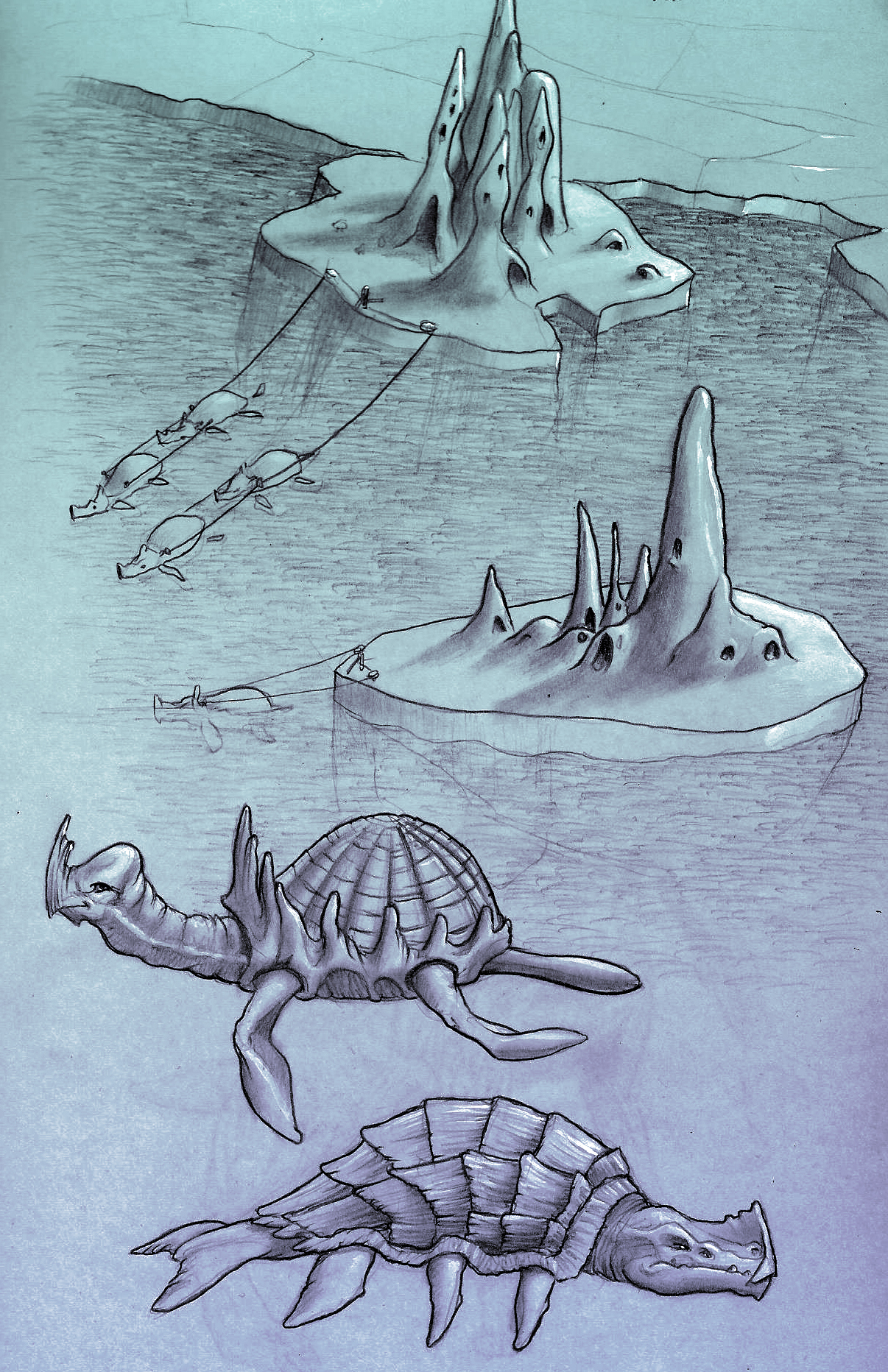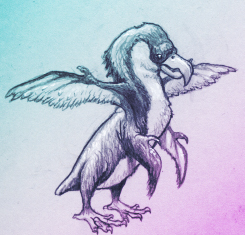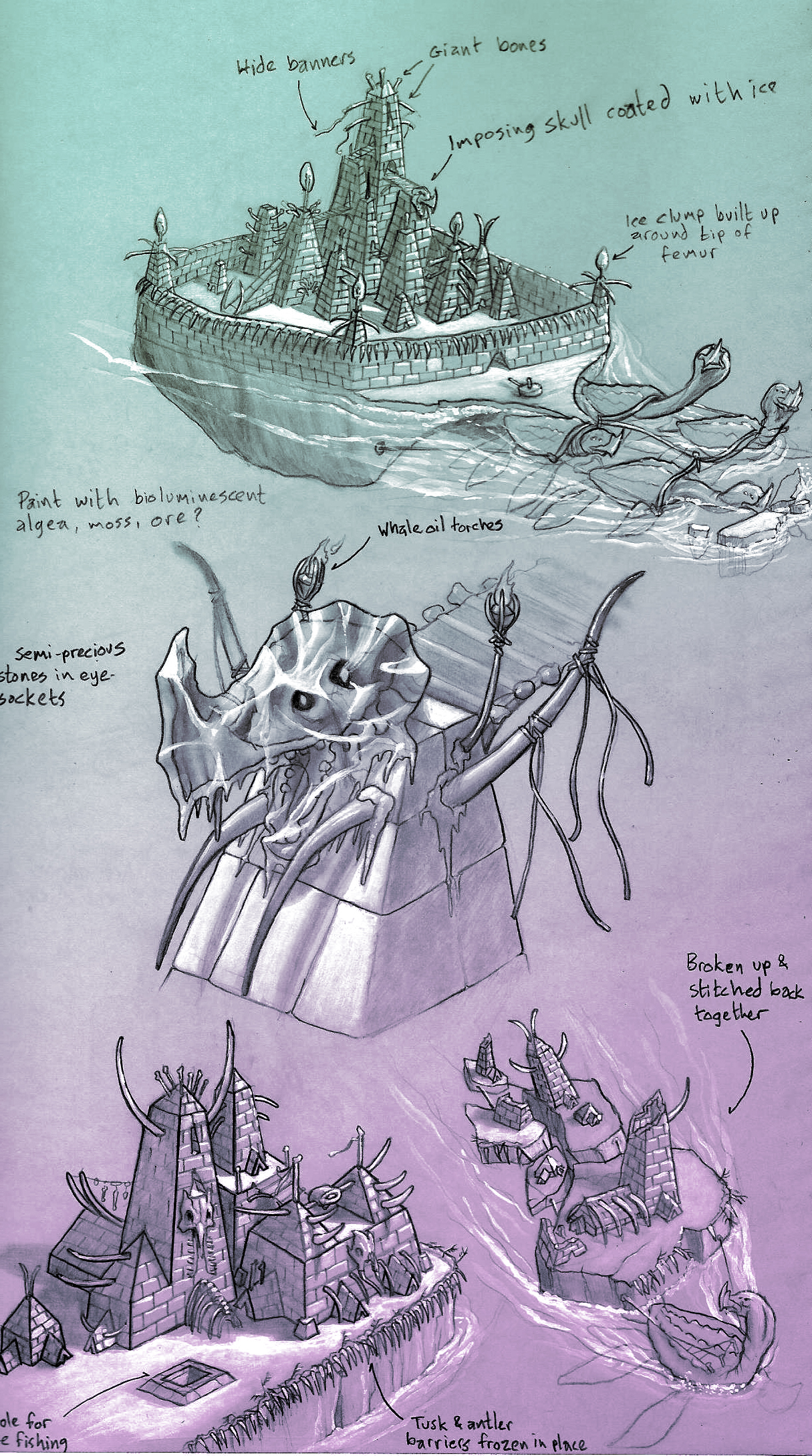Kruliss Floe Fortress
CONTAINS SPOILERS FOR THE MELTING KINGDOM
Since the nation of Talirikt traditionally caught the tuugriks here, the Gaptik nation would not be able to discern that anything was different about this visit from the Talirikti raiding floe. Atiuk hoped the floe had drifted far enough from shore that the distance would hide the fact the castle, warehouse, and temple were only half-built and lacked the usual ornamental tusks, bones, and tuugrik back armor and skulls. They also lacked enough ice blocks to add the traditional defensive wall.
Construction
Floe Fortresses are built on a seasonal basis. When a Kruliss Nation chooses to engage in a southern raid the first step is to scout a suitable ledge of fast ice that near breaking to become floe ice. Unlike ice burgs, floe ice is thin enough to be pulled by icebreaker turtles. Construction of the fortress on the platform begins before it is broken from the shelf. Ice is unpredictable, and so one nation will usually build between 3 and 8 fortresses for a season of raiding, counting on at least one of them being seaworthy. Once free, the floating fortress is directed southward to settlements that are weak enough to demand pillage. A Floe Fortress is created as a miniature city, complete with barracks, temple, throne room, poultry farm, fishing well and armory. If the nation has multiple seaworthy fortresses, the king will always take the largest, which leaves the remainder to be dived among any princes or other Kruli of renown in the nation. There is a complex strategy of competition between the raiding nations, other floes of the same nation, and the natural barrier of warmer climates damaging or disabling the fortress. The renown of kings who have had many successful raids is the primary currency by which a Kruliss nation expands or contracts.Propulsion
Six Icebreaker Turtles
Armor and defense
Ice walls with embedded spikes
Icebreaker turtles are harnessed to pull the fortress
 Arctic swimming birds are commonly kept as a food source
Arctic swimming birds are commonly kept as a food source


by Josh Foreman
Length
133 meters (437 feet)
Height
24 meters (80 feet)
Complement / Crew
80

by Josh Foreman




Comments